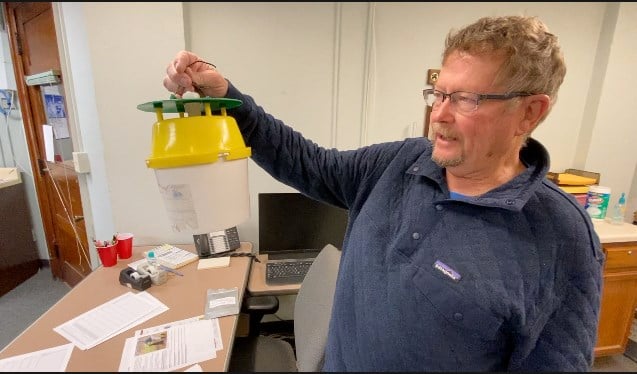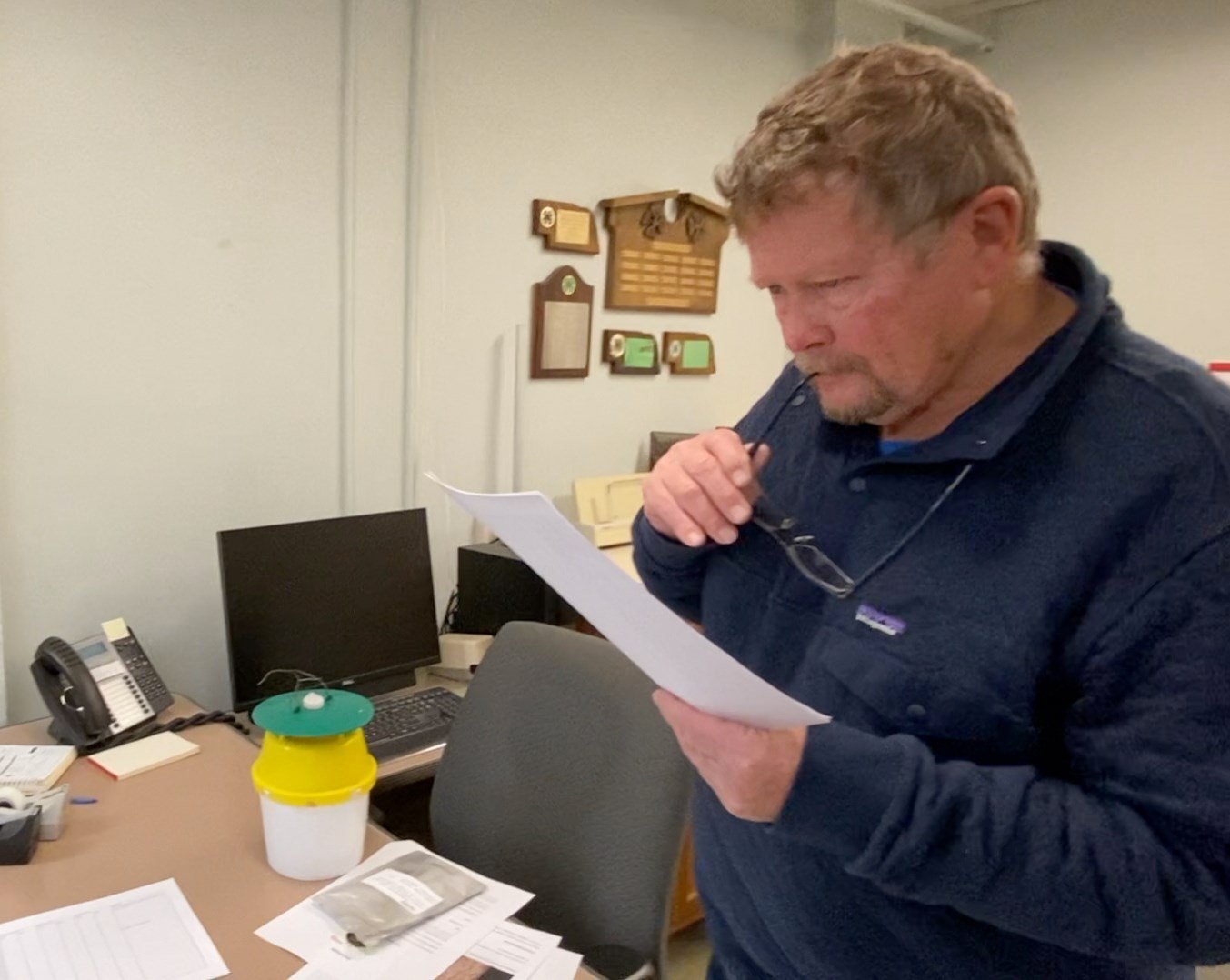AUBURN – The University of Nebraska extension in Nemaha County is counting moths and providing an early alert system for insect pests with potential to damage crops and gardens.
Extension Educator Gary Lesoing has recruited observers in southeast Nebraska to check pheromone traps for black cutworm, armyworm and variegated moths.
He said the data is used in integrated pest management, which includes the timely use of pesticides, genetically-engineered seed and diversified cropping systems.
Lesoing: “A lot of times, if you don’t have to spray, you know, you don’t just for the sake of doing it, to save money and for environmental reasons.”

Lesoing says entomologists consider a finding of nine or more moths each day for two consecutive days to indicate a significant presence of the pests. The most reported in any day at Auburn or Hickman in 2020 was seven.
So far this spring, Lesoing and his observation volunteers have detected no more than three cutworms in a day in Auburn. Five variegated cutworm moths, which overwinter here, were found in Richardson County and eight near Palmyra.
The black cutworm is known to migrate from the warmer climates south on the winds of spring storms.
Lesoing: “We’re kind of the gateway to the state, I guess. At least the eastern part of the state and Falls City.”
He said a timely response to insect infestations is important because cutworms can do the most economic damage when corn plants are small and ground cover plants that stand out in the spring can be a lure for moths looking to lay their eggs.
Lesoing: “Like now, you see a lot of purple in these fields. That’s henbit. That’s a weed, but a lot of times they are attracted to that and they will lay their eggs in those type of things, so it’s important to watch out.”
He said cover crops are useful to keep weeds down in early spring.
Lesoing: “If you keep your soil covered so it doesn’t get light that’s going to help against this. We promote cover crops. A lot times is helps combat the weeds, as well.”
Lesoing: “The more diversified your cropping systems the better. Naturally, you know, 150 years ago this was all prairie and trees. Then you had a lot of natural habitat and natural predators and that’s why these people, when they do have diversified cropping systems where they rotate, you’re going to get a lot more predators that will work on some of these harmful insects.”
This year, they are also trapping for the marmorated stink bug, and Lesoing says farmers are keeping an eye on the Japanese beetle.

https://cropwatch.unl.edu/















